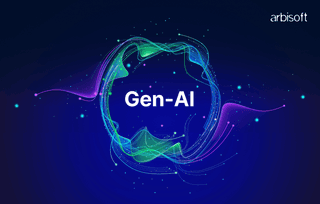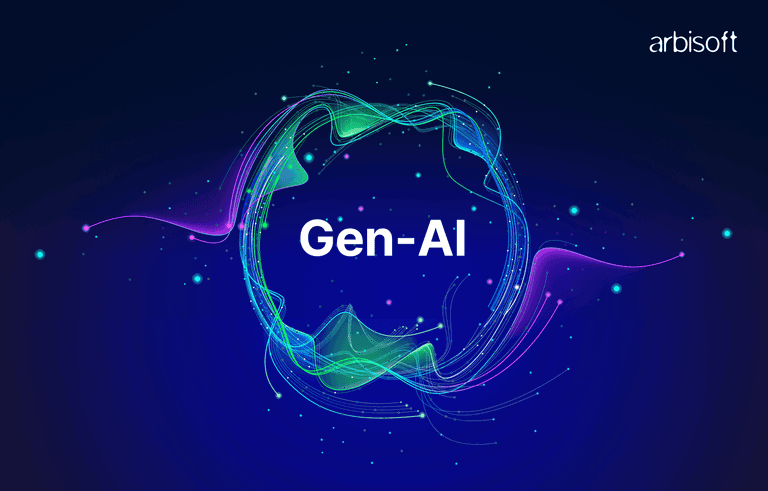We put excellence, value and quality above all - and it shows




A Technology Partnership That Goes Beyond Code

“Arbisoft has been my most trusted technology partner for now over 15 years. Arbisoft has very unique methods of recruiting and training, and the results demonstrate that. They have great teams, great positive attitudes and great communication.”
The AI Whisperer: How AI is Turning Incident Chaos into Calm

We have all been there. The dreaded alert at 3 AM. The frantic rush to figure out what broke, where it broke, and why. In the world of DevOps, incidents are not just technical problems; they are high-stress moments that can damage trust, reduce productivity, and cost real money. The clock starts ticking the moment something goes wrong, and every second spent checking logs, correlating data, and escalating issues feels endless.
But imagine having an invisible partner, an “AI Whisperer,” that can detect early signs of trouble, explain what happened, and even suggest how to fix it, all while you are still pouring your first cup of coffee.
This is not science fiction. It is the reality of modern DevOps powered by AI-driven incident management. Let’s explore how Artificial Intelligence is transforming the way we detect, respond to, and resolve unexpected issues, turning stressful fire drills into predictable and even proactive processes.
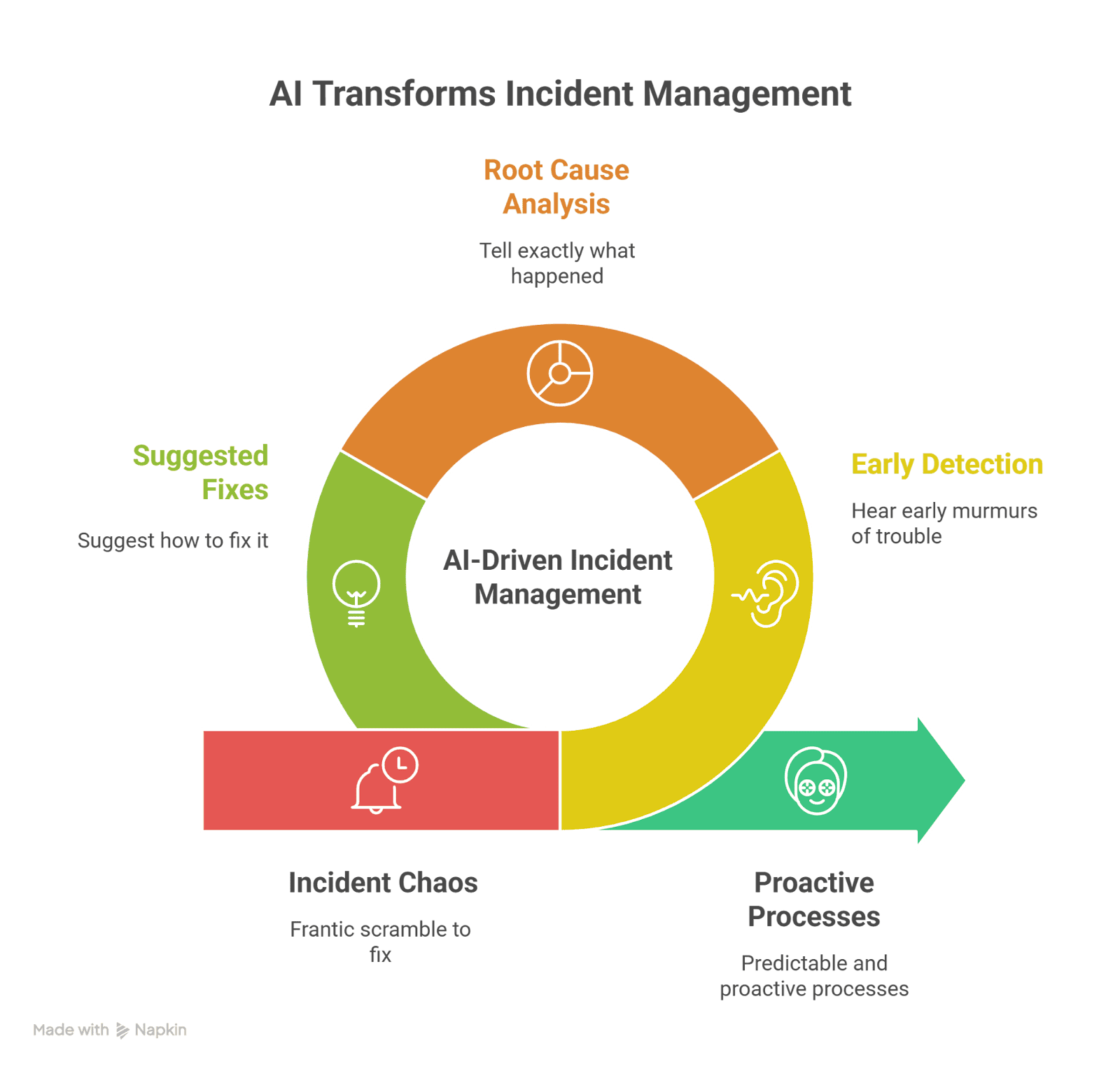
From Reactive Chaos to Proactive Calm
The biggest challenge in traditional operations is the overwhelming amount of scattered data. A failure in one microservice can generate alerts across multiple monitoring, logging, and application performance tools.
This is where AIOps (Artificial Intelligence for IT Operations) comes in. The AI Whisperer does not just collect information; it understands it. It takes logs, metrics, and traces from different systems and connects them intelligently. Instead of facing thousands of individual alerts, AI links related signals together, identifies the real root cause, and presents a clear and actionable summary.
Here is how AIOps changes the nature of incident management:
| Aspect | Traditional Incident Management (Reactive) | AIOps with AI (Proactive & Intelligent) |
|---|---|---|
| Alert Volume | High noise, alert fatigue, and fixed thresholds. | Over 90% noise reduction through intelligent grouping and dynamic baselines. |
| Root Cause | Manual correlation by engineers, hours spent switching dashboards. | Automated correlation that provides the root cause within minutes and with high confidence. |
| Resolution Focus | Focused on firefighting, restarting services, or rolling back after impact. | Focused on prediction and prevention, scaling resources before failure, and self-healing known issues. |
| Time to Resolve | Long MTTR (Mean Time to Resolution), limited by human speed. | Short MTTR with automated remediation executed at machine speed. |
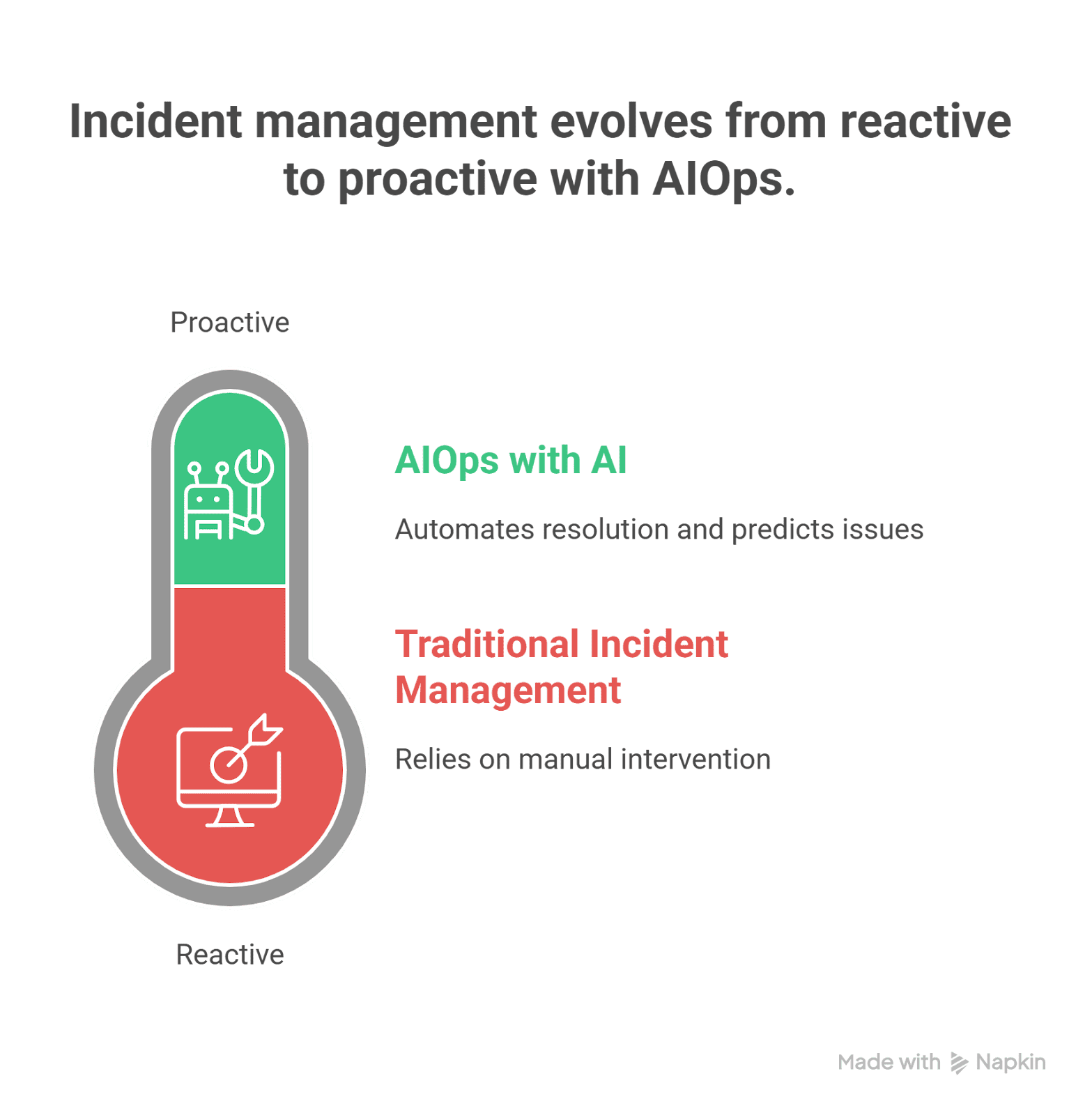
Automating the First Responder: The Art of Intelligent Triage
When an incident occurs, the first few minutes are critical. Is it a small glitch or a complete system failure? Who needs to know, and who can fix it best? Traditionally, this triage process was manual and chaotic, often leading to delays or alerts being sent to the wrong teams.
Now, the AI Whisperer takes over this first response. As soon as an anomaly is detected, AI can:
- Instantly classify the incident: Determine whether it is a system outage or a performance issue.
- Prioritize severity: Based on learned patterns and baselines, AI identifies which issues need immediate attention.
- Route alerts intelligently: AI recognizes which team or engineer has the right expertise based on the problem type and past resolution data.
This smart triage ensures that the right people get notified with the right information at the right time. It reduces alert fatigue and ensures a faster, more efficient response.
Beyond Detection: The Path to Self-Healing Systems
The ultimate goal is not just faster resolution but preventing incidents from affecting users or even fixing them before human intervention is needed. AI is helping achieve this vision of self-healing systems.
This process is not magic. It is driven by machine learning models analyzing centralized data and triggering automation workflows through tools such as SOAR (Security Orchestration, Automation, and Response) or specialized AIOps platforms.
Here are three common examples where AI shifts from being a monitoring tool to an active problem solver:
| Scenario | Problem Detected by AI | AI’s Automated Remediation |
|---|---|---|
| Runaway Container | AI detects a steady increase in memory usage in a microservice that exceeds historical limits and predicts a crash within 15 minutes. | AI triggers a Kubernetes workflow to increase the pod’s memory limit and automatically restarts the affected pod. |
| Database Saturation | AI links application transaction errors with a database connection spike reaching 98% utilization. | AI executes a SOAR playbook to temporarily limit traffic at the load balancer and scale up the database connection pool. |
| Flaky CI/CD Agent | AI analyzes a failed build log and identifies a known issue caused by a stale cache rather than a code error. | AI directs the CI/CD platform to clean the build agent’s workspace and re-run the build on a fresh environment. |
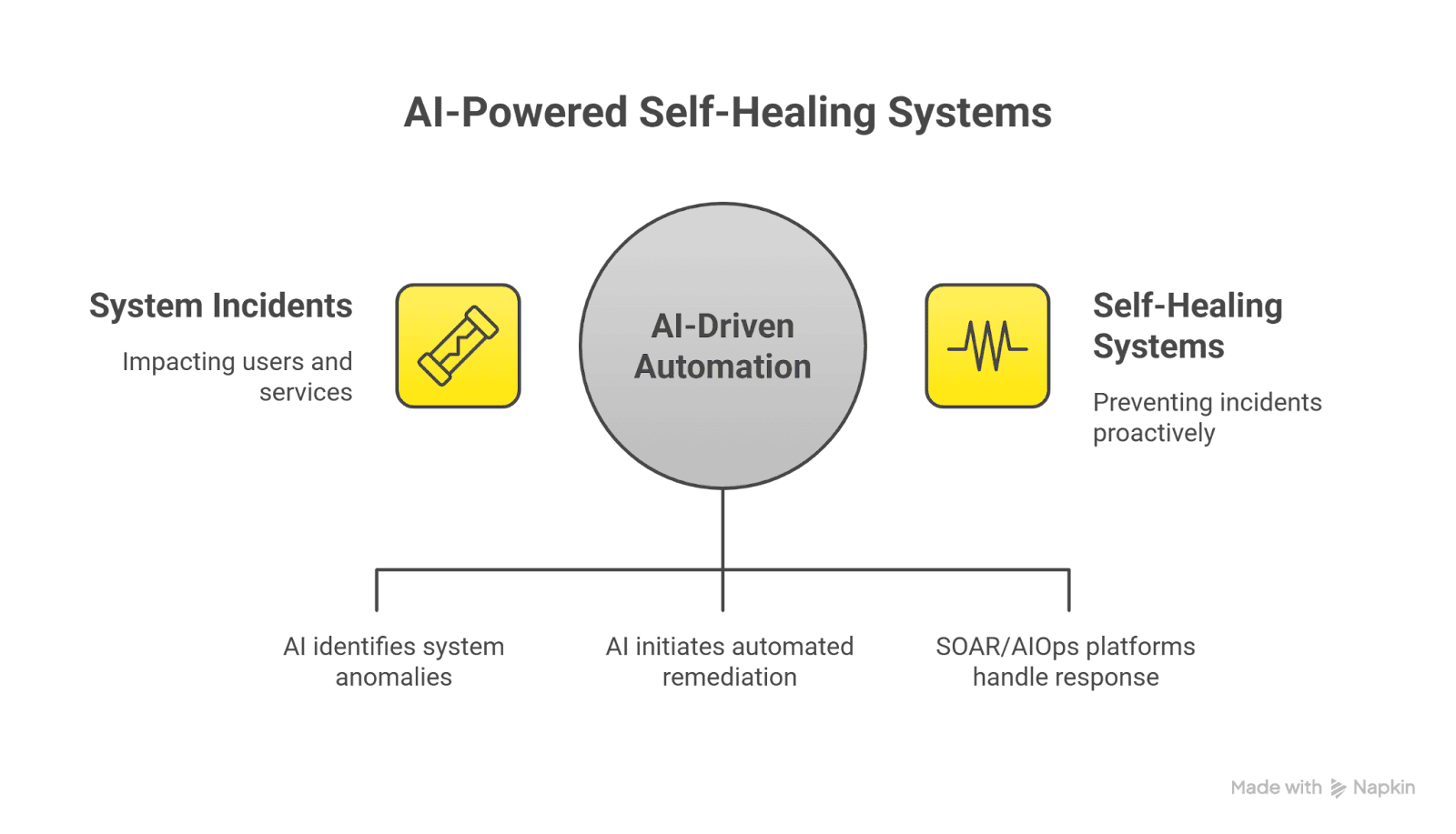
Case Study: Global Financial Institution Cuts Resolution Time by 80%
A global financial services organization operating a complex online banking system with thousands of microservices faced frequent service disruptions during busy hours. Their manual incident process was reactive and inefficient.
The Problem: The IT team could not easily correlate alerts from multiple domains such as network, database, application, and security. The average MTTR for critical incidents was nearly three hours, resulting in high operational costs and customer dissatisfaction.
The AI Solution (AIOps Implementation): The company implemented an AIOps platform to combine all telemetry data and apply machine learning algorithms.
- Noise Reduction: The AI grouped thousands of low-level alerts, such as high CPU usage across several servers, into one unified incident. This eliminated about 95% of alert noise.
- Predictive Scaling: The system learned the patterns that preceded transaction slowdowns and began to detect these signs early, automatically adding cloud resources before users noticed any issue.
- Self-Healing: For recurring problems such as temporary cache failures, AI-triggered scripts restarted frozen processes or cleared the caches automatically.
The Result:
- Incident detection time dropped by 80%.
- Mean Time to Resolution (MTTR) went from 3 hours to only 20 minutes.
- The platform maintained 99.99% uptime during high-traffic periods, protecting both revenue and customer trust.
The Crucial Metric: Radically Reducing MTTR
In DevOps, success is often measured by how quickly problems are fixed. The Mean Time to Resolution (MTTR) is the key metric that shows how effective your incident management process is.
Traditional workflows delay every stage: Detection Delay → Triage Delay → Analysis Delay → Action Delay.
The AI Whisperer removes these bottlenecks. Through instant data correlation, intelligent routing, and automated fixes, AI does not just reduce MTTR slightly, it transforms it. A shorter MTTR means less downtime, fewer frustrated users, and stronger business performance. It is the most visible and measurable benefit of AI-driven incident management.
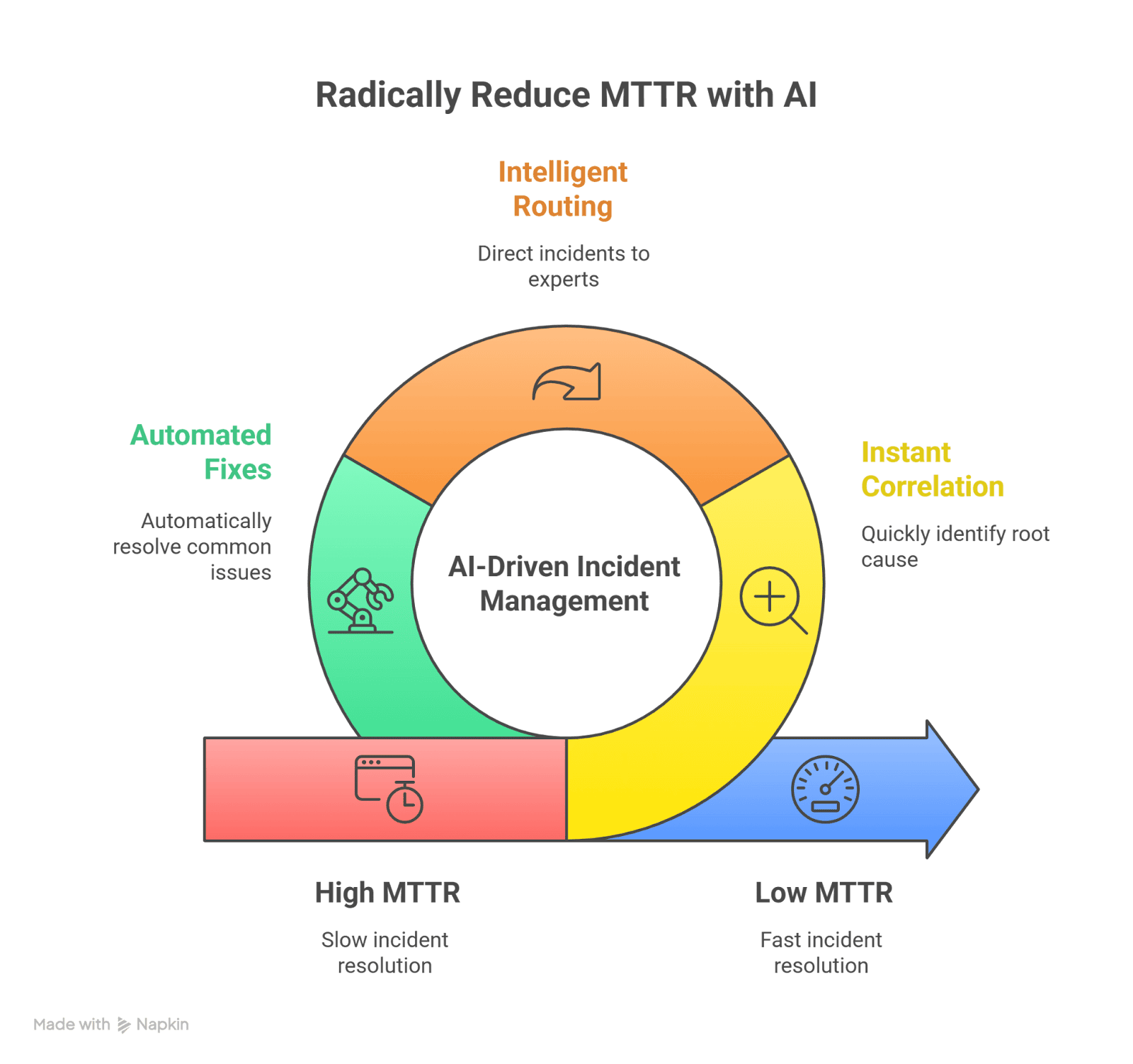
The Human Element: Empowering Teams, Not Replacing Them
It is important to understand that AI in incident management is not designed to replace DevOps or SRE teams. Instead, it empowers them. It gives engineers enhanced visibility, precision, and access to insights drawn from years of incident data.
By taking over repetitive tasks like data correlation, triage, and initial remediation, AI frees human teams to focus on complex issues, long-term strategy, and system improvements. It changes the stressful on-call experience into something more controlled and predictable.
Getting Started: Your First Steps to AI-Powered Calm
Whether you manage a large enterprise or a small development pipeline, you can start introducing AI into your operations with clear, practical steps.
Here is a three-step plan to begin using your own AI Whisperer:
- Centralize Your Data (The Foundation): AI works only as well as the data it receives. Make sure all logs, metrics, traces, and alert history are stored in one central system. Unified data is essential for machine learning models to find accurate patterns.
- Start with Log Analysis (The Quick Win): Use an AI-based log analysis tool that can group similar errors, remove repetitive alerts, and highlight real anomalies. This reduces alert fatigue and improves focus for on-call teams.
- Introduce Smart Triage (The Efficiency Booster): Connect an AIOps tool to your existing alerting system. Configure it to send incidents to the right teams based on historical performance and incident type. This simple step can significantly speed up initial response times.
The future of DevOps is intelligent. Adopting AI in incident management is not just a technical upgrade; it is an investment in your team’s peace of mind and your organization’s resilience. It is time to replace chaos with calm.
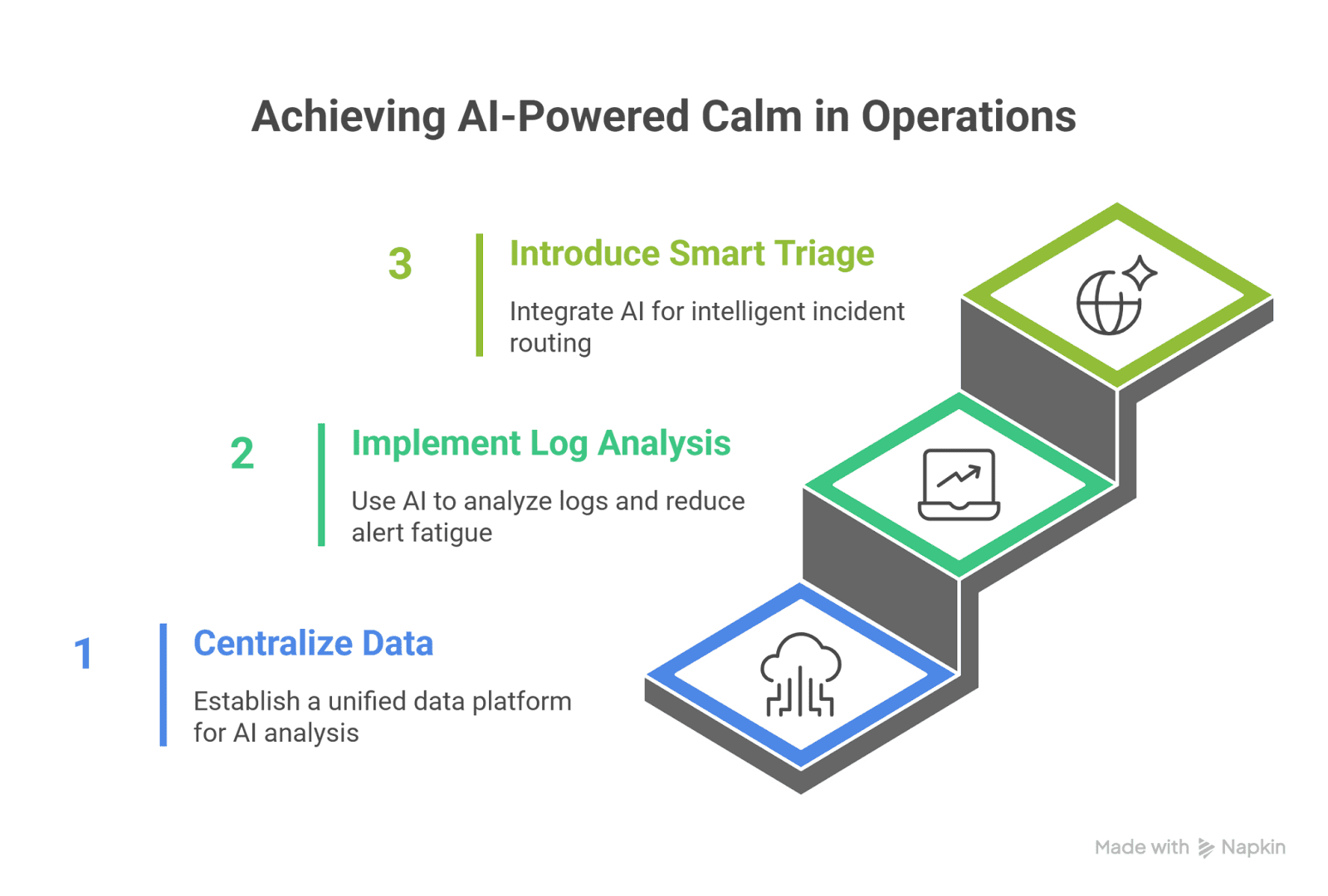
Further Reading and References
- AIOps Platforms: Explore solutions from providers such as Dynatrace, PagerDuty, and Datadog for specific features on alert correlation and auto-remediation.
- Case Study Sources: Data and outcomes, including the 80% reduction in detection time and decrease in MTTR from 3 hours to 20 minutes, are based on verified case studies published by AIOps vendors and industry analyses of financial service organizations.
- Concepts: For a deeper understanding of how self-healing systems are built, research topics such as Causal AI and SOAR (Security Orchestration, Automation, and Response).








